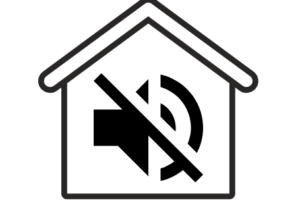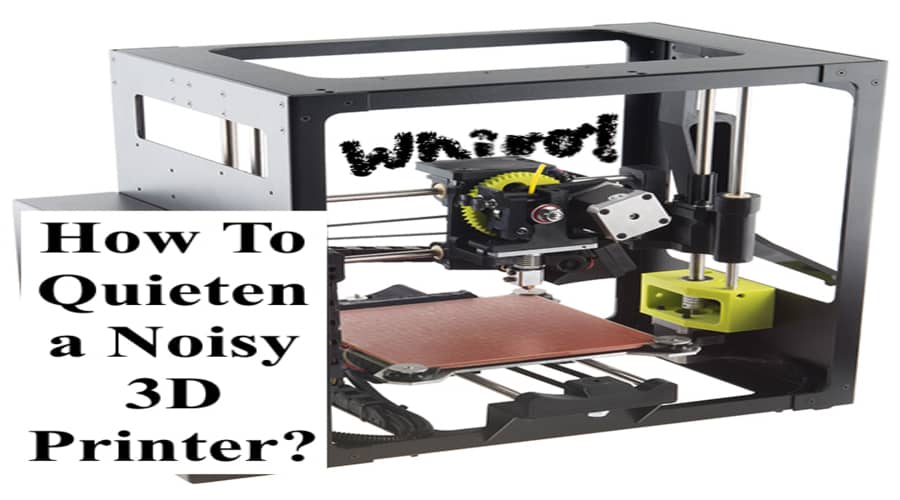Soundproofing a 3D printer isn’t a very difficult task- yet there are so many who never get around to it.
Unless you have a big space to yourself, you might seriously cheese off flatmates and/or neighbours with the incessant noises a 3D printer makes.
Even if that’s not a concern, you certainly can’t leave most amateur 3D printers on if you want a good night’s sleep!
Luckily, there are some really easy fixes that just about anyone can do.
Along with that, I’ll also cover some more involved noise reducing solutions that require a bit of technical know-how.
Best Way To Soundproof a 3D Printer
The simplest way I found online was to just block all sounds coming from the printer by building a box/cabinet to place the printer in or buying one.
You might find it difficult to buy a cabinet that’s just the right size for your printer, though, so you may just have to do a bit of work here.
Going by several accounts online, you can get up to 10 dB reduction in noise doing this- that’s more than 50% noise reduction.
There are 3 things that you should keep in mind though:
First, the cabinet should not be combustible. Most DIYers will use wood , so make sure you use a thick plywood that won’t catch fire easily.
If you have found a pre-made cabinet, it’s even better if it’s made of aluminum or steel with thick insulated glass.
Secondly, also remember to think about accessibility while buying your cabinet. Ideally, you should be able to open it from all sides so that if you need to adjust or change any part of the 3D printer you don’t have to take it out entirely and then make the adjustments.
Third, you’ll want to read up on the ventilation aspect of your cabinet. My research on this suggests that you don’t need ventilation for all types of builds and having a closed environment could even be beneficial for your build.
Essentially, it all depends on the filament you use and the optimal temperature to use it.
After having gone through a couple of tutorials online to build such cabinets/ enclosures for 3D printers, I realized that there are two things you can do and then forget about the ventilation problem altogether.
Mind you, this requires one to be a little bit handy with tools and electronics, but if you are comfortable doing it, you could:
-
- Remove the filament coil and install it on top of the cabinet. You’ll need to drill a hole through a cabinet to allow the filament to feed through.
- It’s also a good idea to install the stepper motors outside of the cabinet since these need to be kept cool
You can read how this guy ventilated his printer enclosure here.
Some Further 3D Printer Soundproofing Tips
#1 Place rubberized mats under the 3D printer
Some at-home 3D printers tend to vibrate a bit excessively while functioning. The cause could be anything- from loose screws and belts to just a generally inefficient functioning of the 3D printer.
The easy fix for this is to dampen the vibrations by placing some insulation under the 3D printer. You could buy specially designed anti vibration pads such as this one on Amazon, or, if you’d rather not spend money here, try out cheap hacks such as placing a thick yoga mat under the 3D printer, cutting up spare tire tubes from the inside and using that as insulation etc.
The only thing you should keep in mind here is that your 3D printer stays level after placing the insulation under it- otherwise it will definitely affect the accuracy of your builds.
#2 Put some lubricant on your linear rods
Over time, with wear and tear, the rods that form the X, Y and Z axes accumulate dust, grime and will need to be cleaned as well as lubricated.
Ultimaker, for instance, recommends using a drop or two of sewing machine oil on each rod for this purpose.
There also are some pretty cheap lubricants that you can buy, such as this one on Amazon. While it’s not branded for printers especially, lot of people in the reviews section have mentioned that they use it for 3D printers.
If you are in a pinch and absolutely need some lubrication you can also use WD-40 as it’s usually available in most homes.
WD or ‘Water Dispersant’- 40 isn’t a normal lubricant, rather- is a mix of multiple lubricants along with water repellent substances, among other things. However, most 3D printer owners I came across on forums recommend you avoid it for this very reason- that it also has water repellant properties which makes the dries the surface you put it on.
DIY 3D Printer Soundproofing tips
#1 Reduce current supply to the stepper motor
The stepper motor is a major source of noise in most 3D printers. Within permissible limits, reducing the current being supplied to it will reduce the amount of noise it makes. You will need to fiddle around with the potentiometer connected to the stepper motor a bit for this
#2 Change the stepper motor
In case the above step isn’t enough you might want to consider changing the stepper motor itself. There are quite a lot of alternatives that provide relatively silent functioning as compared to the default motors in most 3D printers.
The most popular one is the TMC2130 Stepper Motor Driver. It comes with wireless integration, so the best part is that you don’t even need to manually change the resistance values or fiddle with the board at all- it automatically does that and you can monitor it from your computer.
For an in-depth look at the TMC 2130, here’s a video demonstration:
#3 Replace cooling fans
Along with the stepper motor, cooling fans are generally the noisiest parts of a 3D printer. You can easily replace them with quieter ones, such as this one on Amazon
#4 Rubber dampeners for stepper motor
You could buy specific rubber dampeners for placing under each stepper motor to dampen the vibrations, effectively, at the source.
From user reviews online- while most are happy, some of them say that it affects the build quality slightly. They are cheap though, so you could try them out if you wanted. The Nema 17 is the most popular solution.
#5 Tighten loose screws and belts
This is more of a recurring maintenance tip, but you should check each and every screw- if it is too tight or too loose it might be affecting how much noise your printer makes. Similarly you should check the pulleys, belts and tighten them if they are loose.
Common Sources Of Noise In A 3D Printer
Here are the few common sources of noise in a 3D printer:
-
- Stepper motor
- Fan noise
- During X, Y or Z axis motion
- Vibrations from the frame of the printer
Conclusion
That’s about it, but I’d like to hear from you now. Have you used these tips or any other solution to quieten your 3D printer?
Let me know in the comments!


